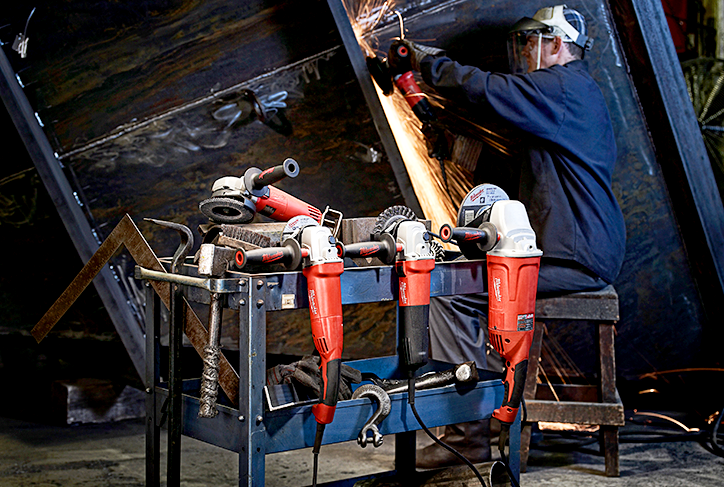The decision of whether to repair or replace a piece of equipment is seemingly simple. If you dig a little deeper, you’ll find that it is much more nuanced than it appears. It might be impossible to definitively say when it’s better to pay to maintain your tools, or to save to upgrade on newer models with newer technology, but there are some factors worth weighing to help make educated guesses and plan smarter.
In this article, we will:
- Go over some factors you might consider when trying to make smart decisions about managing your tool and equipment inventory. We’ve included some helpful infographics to illustrate these points. **Keep in mind this is meant as a guide and shouldn’t be prescriptive.
- Share some tips on how you might service your tools and equipment to extend their longevity.
Construction Inventory Management: Factors Impacting Your Tool and Equipment Purchasing Decisions
There are a number of factors that could impact your decision to repair or replace power tools and construction equipment.
Questions to ask when determining if it’s time to replace your tools and equipment
- How old is your current equipment? Are you long overdue for replacements? If not, how long might you get by with what you have?
- Do newer products in the market offer improved performance, productivity, or safety?
- Do these newer products solve problems that you encounter with older products?
- Is the new solution cutting-edge, offering useful features that can expand your operations?
Here are our top thoughts for your consideration when making a decision to repair or replace your tools.
Cost of Repairs
The decision to replace a tool, for a lot of inventory managers, comes down to the cost of repairs.
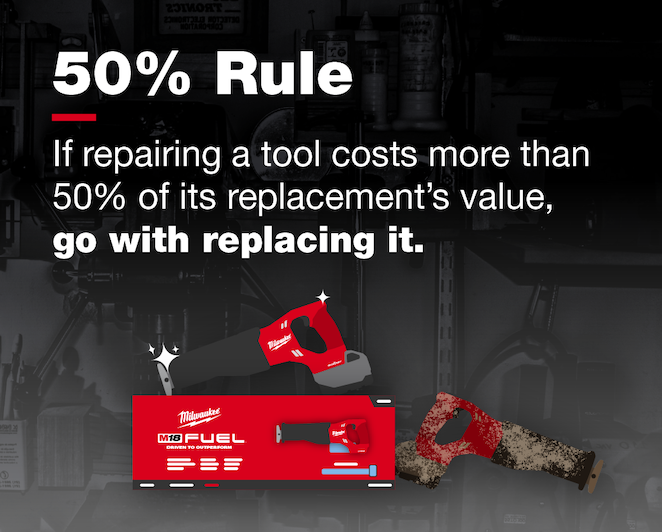
A generally good rule of thumb: If the maintenance cost is over 50% of the value, that's a purchase. If it's less than 50% of the value, that's a repair. This is pretty straight forward.
Depreciation
You also have to take into account the rate of at which the value of a tool depreciates. After all, the value of any item is not the same at year three, five, or ten of ownership as it is at day one. New cars, for example, are estimated to lose a whopping 10% of their value the second you drive them off the lot.
It’s worth calculating your tool’s depreciation before making your decision to repair a broken tool or replacing it.
Tradeoff
The problem with making your tool purchasing decisions in the moment, as they’re needed, is that these instances are reactive, not forward-looking. The tradeoff with this approach is it can oftentimes result in downtime. This could be measured in time spent rearranging your inventory or the time your tools spend in the service shop. Worse, there’s the unknown future downtime that can transpire should the tool fail again once repaired.
So, when is it appropriate to plan your tool and equipment purchases to prevent unforeseen downtime? While there’s no crystal ball to predict the exact time at which a tool might fail, there are cues and indicators to look for that can give you a general sense that the time to purchase replacements might be opportune:
- Performance cues: You wouldn’t hop in a car with spongey brakes that gradually depress to the floor, or one that’s running rough and making unusual noises. That’s a trip to the hospital, or a breakdown along the side of the road, waiting to happen. The same principle can be applied to your construction tools and jobsite equipment. If you notice sudden declines in the performance you typically expect from it—if it’s taking longer to perform a job or unsatisfactorily completing the task—it might be time to consider replacing it or, at the very least, returning it to a certified service center.
- Visual cues: As a professional trade, you expect durability from the heavy-duty tools you send to a job. So, it stands to reason your tools will exhibit signs of wear while still performing. However, when they’re pushed to extremes and these extremes start to manifest in broken external compartments or exposed internal electronics, then they’re definitely ready to be replaced. Safety first!
Life of Power Tools
The lifespan you can expect from your power tools can widely vary depending on a lot of external factors, like: frequency of use, the kind of use you subject them to (moderate vs heavy use), where they’re kept, exposure to weather, etc.
If your tools regularly see heavy use, it stands to reason that they’ve been subjected to harsher external factors that could impact their life expectancy. It’s worth noting, proper maintenance (and I’ll talk about this more in the second half of this article) can help extend the lives of your power tools.
As a general rule of thumb, though, if your power tools are older than 5 years, especially if they see heavy use, you might want to consider replacements, or a least a backup unit.
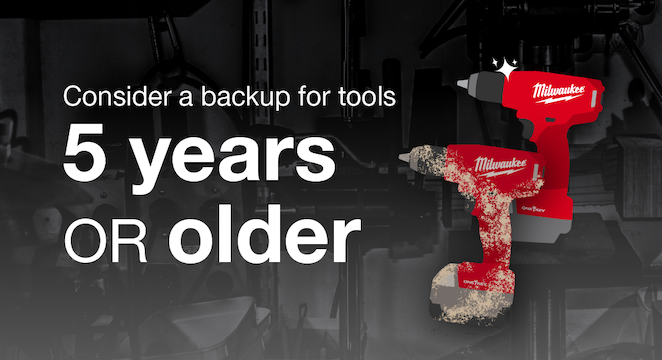
Remember: Just as you don’t want to be stranded on the side of the road, you don’t want your schedule to become stranded as an old tool that’s seen better days gives out and the job it’s there to perform can’t be done.
Using a comprehensive construction inventory management and tool tracking system can help you keep track of the age of your assets, as well as their maintenance schedules, to ensure they’re properly cared for and will continue to work to the optimum for their entire lifespan.
You can also use One-Key to progressively monitor the lives of your tools and equipment. If you’ve had a tool for a number of years that has been to the shop and its performance is starting to falter, you’re more empowered with the data to make an informed decision to retire that tool.
New Technology
Speaking of power tool technology, another thing to consider when replacing equipment are the new technological advances that are shaping the industry and reimagining how work gets done on jobsites.
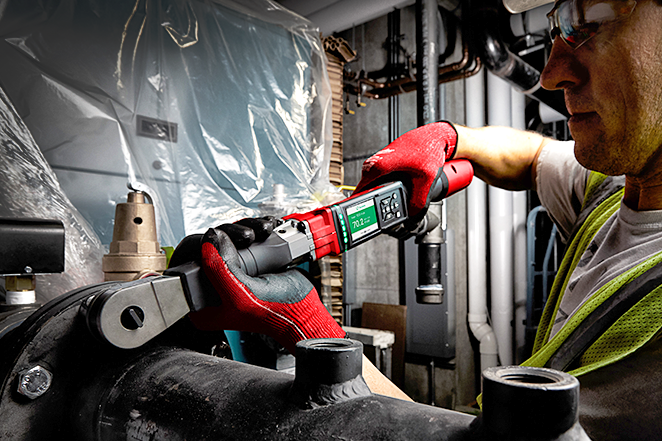
New technological advances have presented smart tools, and other novel construction technologies, to boost productivity and performance, and tremendous infrastructure building is laying the groundwork for what should be an empowered culture of builders, obsessed with delivering quality work faster.
Recap: Factors Influencing When to Replace Tools
To quickly recap, some factors that might influence to you replace your tools include:
- Cost of the repairs are more than 50% the value.
- Age of the tool is more than 5 years old.
- Newer solutions with cutting edge power tool technology exist to make you more productive and faster.
How to Maintain Tools and Equipment
While replacing your power tools and construction equipment periodically is recommended, there are some general practices you should consider that can help extend the length of your items.
Follow your recommended service interval
It’s important to keep up with the service intervals recommended by the manufacturer of your tool or construction equipment. I’ll give you a more mainstream example. The need to change the oil in our cars, or have someone do it for us, is well-known. After all, nobody wants their trusty daily driver to crap out on them, leaving you stranded somewhere, forced to hail a cab, roadside assistance, or walk to the nearest service station.
The same applies to the working parts of your tools and equipment. Regular service, as needed, can help extend their longevity. What’s more, this will ensure you maintain your warranty.
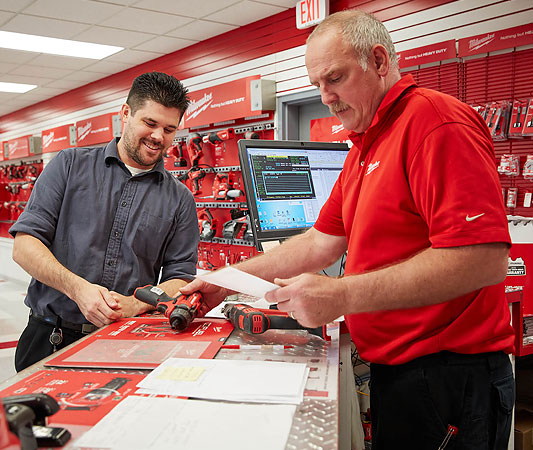
You can typically find service schedules and manufacturer-specific recommendations for tool maintenance and equipment management in your owner’s manual. For Milwaukee® brand tools, we’ll automatically upload your owner’s manual into One-Key when you add your item into the app by serial number. You can access a PDF document of your owner’s manual by navigating to “uploads” within the item’s details.
Also, from the Item Detail, you can schedule your “Service Date” and even set a recurring service reminder from the web portal or from your mobile app, so you know you won’t forget about important tool and equipment maintenance, and make sure your warranty stays intact.
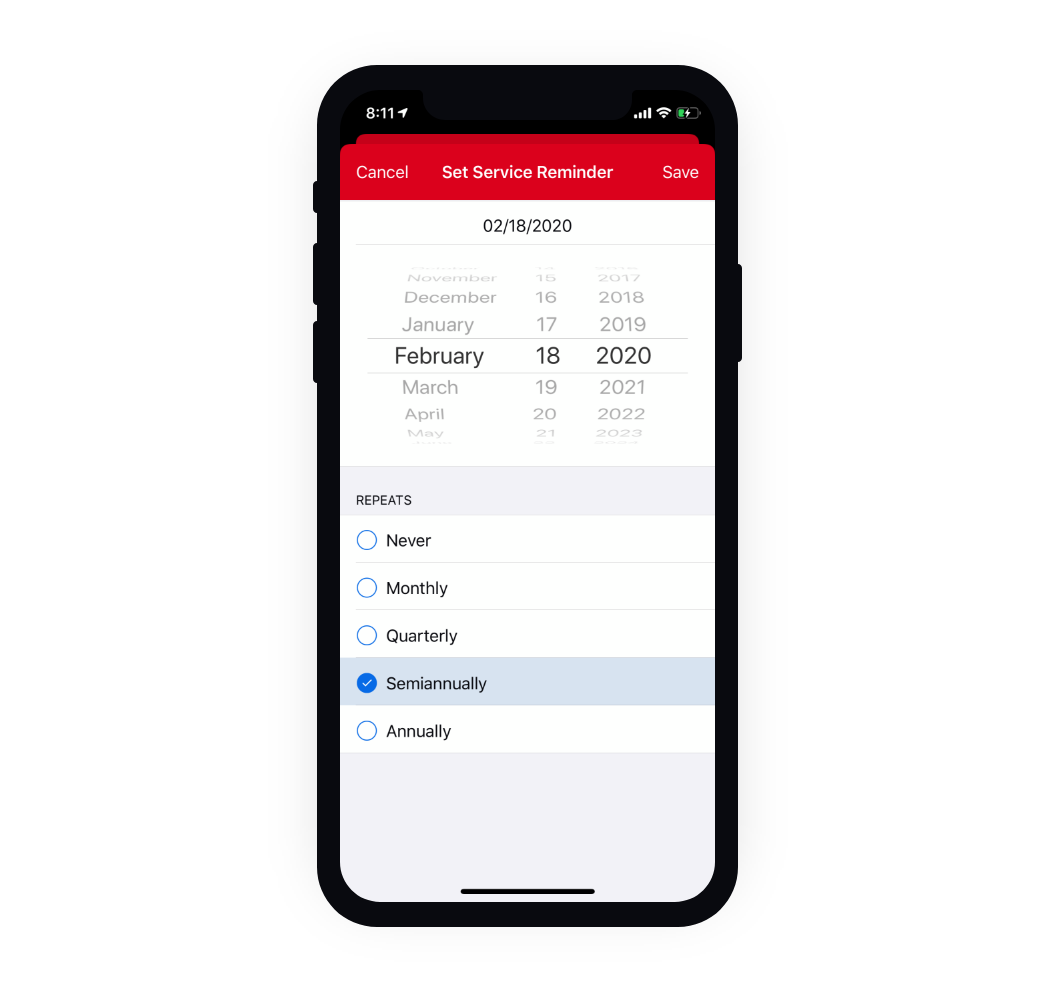
What’s more, as a free inventory management software platform built for contractors and tradesmen, with One-Key you can keep track of the service intervals for tools and equipment from all manufacturers.
Maintain operational records
In addition to letting you set service reminders so you don’t forget to have your tools serviced and keep them up-to-date, One-Key lets you document and store your service records.
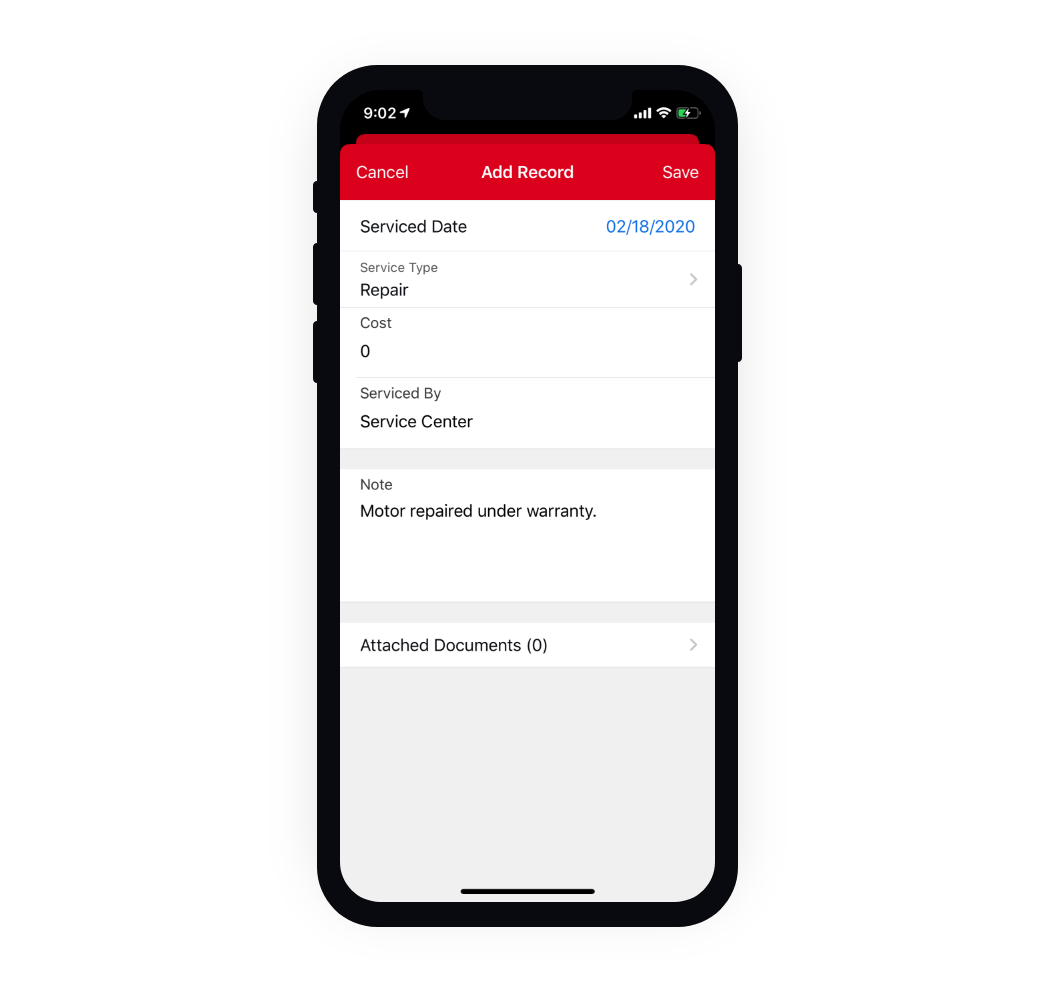
In addition to letting you set service reminders so you don’t forget to have your tools serviced and keep them up-to-date, One-Key lets you document and store your service records.
This helps to keep a backlog on all your power tools and equipment. Empowered with this information, you’ll be able to monitor your inventory, all the tools and equipment you have working across your operations, and make more informed decisions about when it might be a good time to retire a tool, for example, that has been on the job for a number of years.
Cool down heated tools
Overworking power tools puts a lot of strain on the motor and internal components, which will cause them to run hot and overheat—especially when working with difficult material like concrete, hard metals, or hard wood.
If you’re performing a task with a tool that does start to get hot, you should move on to another task and give this tool a chance to cool down. This will ensure that you save your tool from wearing out the motor or burning out internal components.
Clean and lubricate external and internal components, respectively
While heavy-duty power tools should be built to withstand the harsh jobsite environments you throw them into, cleaning your tools regularly can help keep dirt, debris, and other particles out of the motor and ensure it keeps trucking through the high-performance jobs you need it for.
It’s also advisable to lubricate the internal motor as needed. Like oil in your car, lubricant helps the moving parts of your power tools to function properly and keeps the internal components from overheating and corroding. We recommend checking the maintenance section of your tool’s owner’s manual and follow these instructions to correctly lubricate your power tool to keep it in optimal working order.
Calibrate, as needed
There’s a lot of moving parts inside a power tool that need to remain in proper alignment. Different tools follow different maintenance schedules and will therefore need to be recalibrated after a specified time, typically after a number of hours of use.
The recently launched Milwaukee M12™ Digital Torque Wrench, for example, comes with a calibration certificate and needs to be recalibrated at 1 year, or 5,000 events. We recommend following your owner’s manual calibration schedule to ensure your tool remains properly aligned and, in turn, functionally sound.
Replace worn parts
To go back to the car analogy, extended use will lead to parts–spark plugs, brake pads and rotors, air filters, etc.—needing to be replaced. Similarly, as your power tools age and see extended use, you’ll need to get some internal parts replaced— carbon brushes, drive belt, etc.—replaced.
Take care of your batteries
Making sure your batteries don’t overheat can help extend their lives. If they do overheat, they can fry and cause irreparable damage. Store these, and your power tools, in a climate-controlled environment. Avoid temperature spike-prone areas, like job box in the back of an enclosed truck. Avoid draining the battery completely before recharging it.
TL;DR
It’s hard to determine definitively when power tools and construction equipment warrant replacing, but there are some general factors to consider:
- Cost of repairs: Use the 50% rule. If the maintenance cost is over 50% of the value, replace it. If it's less than 50% of the value, repair it. Other considerations:
- Decline in performance
- Excessive wear
- Age of tools and what they’ve been exposed to: You should consider having a backup unit in place for power tools 5 years or older, especially if they experience heavy use.
- New technology: Are new features and smart tool technology enough to warrant purchasing new tools and equipment that could improve the productivity and performance you can expect new?
You can generally extend the life expectancy of your tools by:
- Sticking to your manufacturer’s recommended service interval
- Creating a backlog of good operational records
- Cool down tools before they overheat
- Getting tools calibrated
- Replacing worn parts
- Maintaining good battery care
Just in the last few years there has been some major advances in construction technology, and we continue to add to our ever-evolving lineup of smart tools, the largest in the industry!





